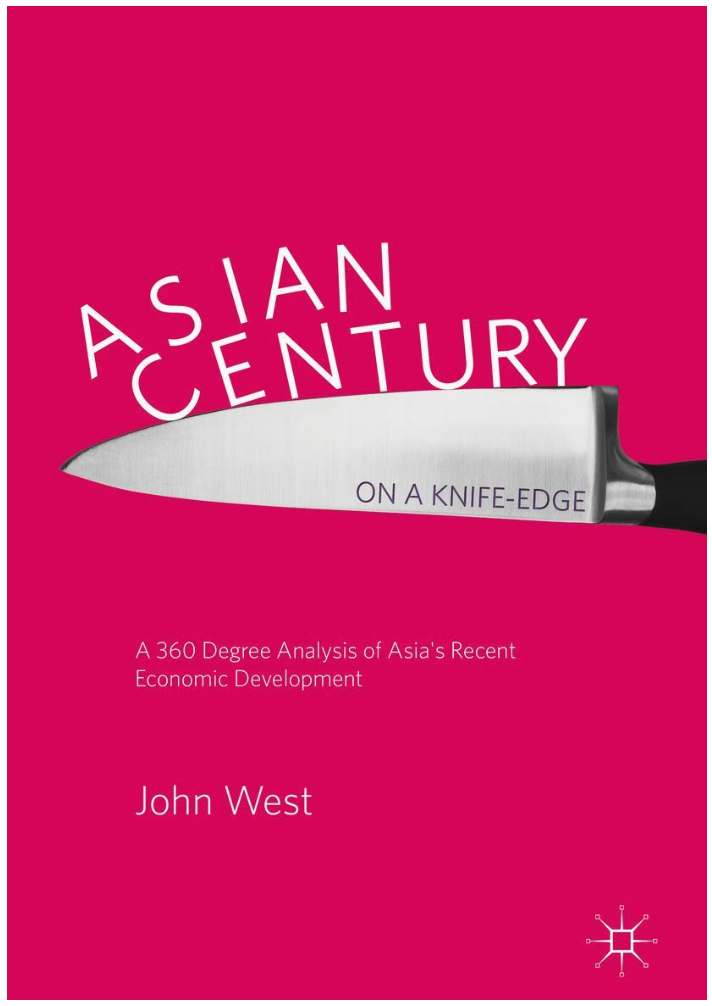Ruta de navegación
Menú de navegación
Blogs
Entries with label century of asia .
[John West, Asian Century on A Knife Edge: A 360 Degree Analysis of Asia's Recent Economic Development. Palgrave Macmillan. Singapore, 2018. 329 p.]
REVIEW / Gabriela Pajuelo

The degree scroll of this book seems to contribute to the generalised chorus that the 21st century is Asia's century. In reality, the book's thesis is the opposite, or at least puts this claim "on a knife's edge": Asia is a continent of great economic complexity and competing geopolitical interests, posing a series of challenges whose resolution will determine the region's place in the world in the coming decades. For now, argues John West, a university professor in Tokyo, nothing is certain.
The book begins with a preamble on the recent history of Asia, from the Second World War to the present day. Already at the beginning of this period, economic liberalism was established as the standard doctrine in much of the world, including most Asian countries, in a process driven by the establishment of international institutions.
China joined this system, without renouncing its domestic doctrines, when it joined the World Trade Organisation in 2001. Since then, there have been some shocks such as the financial crisis of 2007-2008, which severely affected the US economy and had repercussions in the rest of the world, or the recent tariff tensions between Washington and Beijing, as well as the current global crisis caused by the coronavirus pandemic.
The principles of protectionism and nationalism deployed by Donald Trump and an increased US resource to the hard power in the region, as well as a more assertive policy by Xi Jinping's China in its geographical surroundings, also resorting to positions of force, such as in the South China Sea, have damaged the multilateralism that had been built up in that part of the world.
The author provides some thought-provoking insights into the challenges that Asia will face, given that the factors core topic that favoured its development have now deteriorated (mainly due to the stability provided by international economic interdependence).
West examines seven challenges. The first is to gain a better position in global value chains, as since the 1980s the manufacture of components and the production of final products has taken place in different parts of the world. Asia is heavily involved in these supply chains, in fields such as technology or apparel production, but is subject to business decisions by multinationals whose practices are sometimes not socially responsible and allow abuse of labour rights, which are important for the middle classes development .
The second challenge is to maximise the potential of urbanisation, which has grown from 27% of the population in 1980 to 48% in 2015. The region is known for its densely populated mega-cities. This brings with it some challenges: people migrating to industrial centres generally move from leave productivity jobs to high productivity jobs, and health care capacity is put at test . But it is also an opportunity to improve environmental practices or encourage innovation through green technologies, even though much of Asia today still faces high levels of pollution.
Another challenge is to give all Asians equal opportunities in their respective societies, from LGBT people to women and indigenous communities, as well as ethnic and religious minorities. The region also faces a major demographic challenge , as many populations either age (such as China's, despite the correction of the "two-child policy") or continue to expand with presumed future supply problems (such as India's).
West also points to reference letter, the barriers to democratisation in the region, with China's notable immobility, and the spread of economic crime and corruption (counterfeiting, piracy, drug trafficking, human trafficking, cybercrime and money laundering).
Finally, the author speaks of challenge that Asian countries can live together in peace and harmony, while China consolidates its position as a regional leader: if there is a Chinese commitment to thesoft powerThrough the Belt and Road initiative, there is also a more confrontational attitude on the part of Beijing towards Taiwan, Hong Kong and the South China Sea, while actors such as India, Japan and North Korea want a greater role.
Overall, the book provides a comprehensive analysis of Asia's economic and social development and the challenges ahead. In addition, the author offers some thought-provoking insights, arguing that the proclaimed "Asian century" is unlikely due to the region's lagging economic development , as most countries have not caught up with their Western counterparts in terms of GDP per capita and technological sophistication. However, it leaves the future open: if the challenges are successfully met, the time may indeed come for an Asian century.
